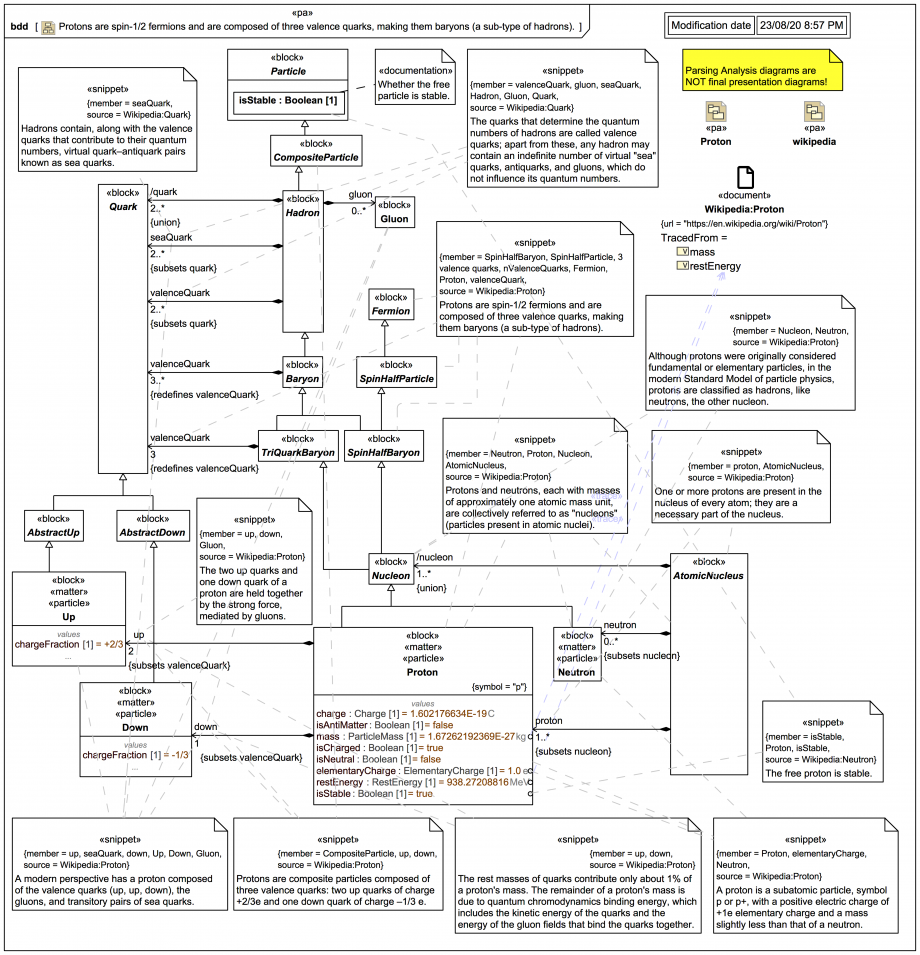Tags and keywords
Nucleon:
If you've been following this trail carefully you'll recall that Wikipedia through us a bit of a curve ball earlier by implying in at least one spot inconsistently that all baryons contain only three quarks:
This led in a previous slide to a questionable Generalization from SpinHalfBaryon to TriQuarkBaryon, which in fact mixed two different aspects, one involving the number of valence quarks, and another involving spin. This has now been cleaned up so that instead SpinHalfBaryon extends Baryon directly and also extends SpinHalfParticle, so if, for example, there is a concrete pentaquark with spin-1/2 it can now attach to SpinHalfBaryon.
This fix also makes it possible to now cleanly include Nucleon as an intermediate abstraction shared by Proton and Neutron, where Nucleon extends TriQuarkBaryon and SpinHalfBaryon.
We are told that:
It was correctly identified earlier that not all quarks "contained" in a hadron are valence quarks. These snippets clarify this further:
That can be included in the existing SysML model easily using subsetted properties. The block Hadron now declares /quark:Quark[2..*] to be a derived union, where seaQuark:Quark[0..*] and valenceQuark:Quark[2..*] are {subsets} of /quark. And Hadron also gets a part property gluon:Gluon[0..*].
Subsetted properties can also be used in AtomicNucleus:
The block AtomicNucleus has a derived union /nucleon:Nucleon[1..*], where proton:Proton[1..*] and neutron:Neutron[0..*] are {subsets}.
Does this mean protons that are not "free" are sometimes not stable? We can make the interpretation to date somewhat more robust by documenting the isStable:Boolean in Particle as now applying only to free particles, where Proton redefines it to be 'true'.
And once again, a "short-cut" quickie version of Parsing Analysis uses the SysML Trace together with compartment listing for 'tracedFrom' to indicate where values for mass and restEnergy were sourced.


